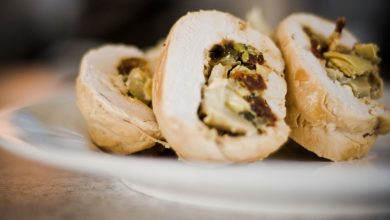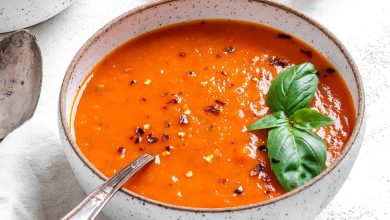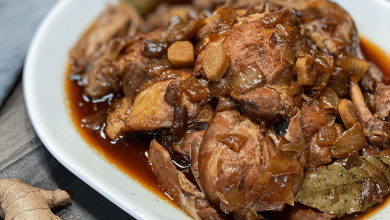Augie Oliver’s Italian Sausage
🇮🇹 Augie Oliver’s Italian Sausage: A Flavorful Journey 🌭
Ah, Augie Oliver’s Italian Sausage, a delightful culinary experience filled with rich history and savory flavors. 🍽️ Let’s dive into the world of this iconic Italian sausage, step by step, and embrace the delicious journey. 🇮🇹🌟
📜 History: Italian sausage has a long and diverse history. It’s a beloved dish in Italian cuisine, dating back centuries. Each region of Italy has its own unique variation, making it a symbol of Italian culinary diversity. Italian immigrants brought their sausage-making traditions to various parts of the world, including the United States.
🥩 Components: Augie Oliver’s Italian Sausage typically includes the following key components:
-
Pork: The primary meat used in Italian sausage is pork. The choice of pork cut can influence the flavor and fat content of the sausage. Pork shoulder is a common choice.
-
Seasonings: Italian sausage is renowned for its bold flavors. Seasonings typically include salt, black pepper, fennel seeds, red pepper flakes, garlic, and sometimes paprika.
-
Casings: Sausage casings are often made from natural materials like hog or sheep intestine. These casings help give Italian sausage its characteristic shape and texture.
👩🍳 Preparation Steps:
-
Prepare the Meat: Begin by cutting your choice of pork into small cubes. It’s important to maintain a balance of lean and fatty meat for the best texture and flavor. Some recipes also mix ground pork with lean cuts.
-
Season the Meat: In a large bowl, combine the meat with your seasonings. The fennel seeds and red pepper flakes are what give Italian sausage its signature kick. Adjust the seasonings to your preference.
-
Grind and Mix: If you have a meat grinder, pass the seasoned meat through it. If not, you can hand-chop the meat finely. Ensure that the seasonings are evenly distributed.
-
Stuff the Casings: If using natural casings, soak them in water to soften. Then, using a sausage stuffer or your hands, fill the casings with the seasoned meat mixture. Tie off the ends of each sausage link.
-
Cure and Refrigerate: Let the sausages rest in the refrigerator for at least 24 hours. This allows the flavors to meld and intensify.
-
Cook and Enjoy: Italian sausages can be grilled, pan-fried, or baked in the oven. Cook until they reach an internal temperature of 160°F (71°C) to ensure they are safe to eat. Serve them in sandwiches, pasta dishes, or enjoy them on their own.
⏲️ Time Needed: The time required to prepare Augie Oliver’s Italian Sausage depends on the complexity of the recipe and your experience. It can take a few hours from start to finish, including preparation, stuffing, and resting. Cooking time varies based on your chosen cooking method.
Now you’re ready to embark on a delicious Italian sausage adventure! Buon appetito! 🇮🇹🍴🌟
🍽️ Nutrition Facts and Health Information for Italian Sausage 🌭
Italian sausage, like many flavorful foods, can be delicious but is also relatively high in calories and saturated fats. Here are some nutrition facts and health information for Augie Oliver’s Italian Sausage:
📊 Nutrition Facts (per 3.5 oz or 100g serving):
- Calories: Approximately 260-280 kcal
- Protein: About 14-16 grams
- Total Fat: Around 22-25 grams
- Saturated Fat: Typically 7-9 grams
- Carbohydrates: Minimal, usually 1-2 grams
- Fiber: Almost none
- Sodium: Approximately 600-800 mg
⚠️ Health Information:
-
Calorie Content: Italian sausage is calorie-dense due to its fat content. Consuming it in moderation is advisable if you are watching your calorie intake.
-
Saturated Fat: Italian sausage is high in saturated fats, which can contribute to elevated cholesterol levels and heart health concerns. Limit your saturated fat intake to recommended daily levels.
-
Protein: It provides a good source of protein, which is essential for muscle health and overall bodily functions.
-
Sodium: The sodium content in Italian sausage can be relatively high. Excessive sodium intake can lead to hypertension, so it’s crucial to monitor your overall salt intake.
-
Portion Control: Given the high calorie and fat content, it’s essential to practice portion control. Enjoy it as part of a balanced meal rather than as the main focus.
-
Preparation Method: How you prepare Italian sausage can affect its overall healthiness. Grilling or baking can be healthier options compared to frying, as they allow some of the excess fat to drip away.
-
Additives and Preservatives: Some commercial Italian sausages may contain additives and preservatives, so it’s a good practice to check the ingredient list if you have concerns about certain additives.
Remember, Italian sausage can be a tasty treat, but it’s best enjoyed in moderation and as part of a balanced diet. If you have specific dietary or health concerns, consider consulting with a nutritionist or healthcare professional for personalized guidance. 🍴🥗🏥








